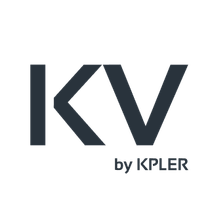Driving price transparency
for global commodity markets
Trusted by the world's leading energy, analytical, and financial organisations.
Removing the black box on commodity prices that drive global LNG and gas markets
LNG
LNG Freight
ICE listed freight assessments (Spark25/Spark30) and forward curves that help to connect global gas markets.
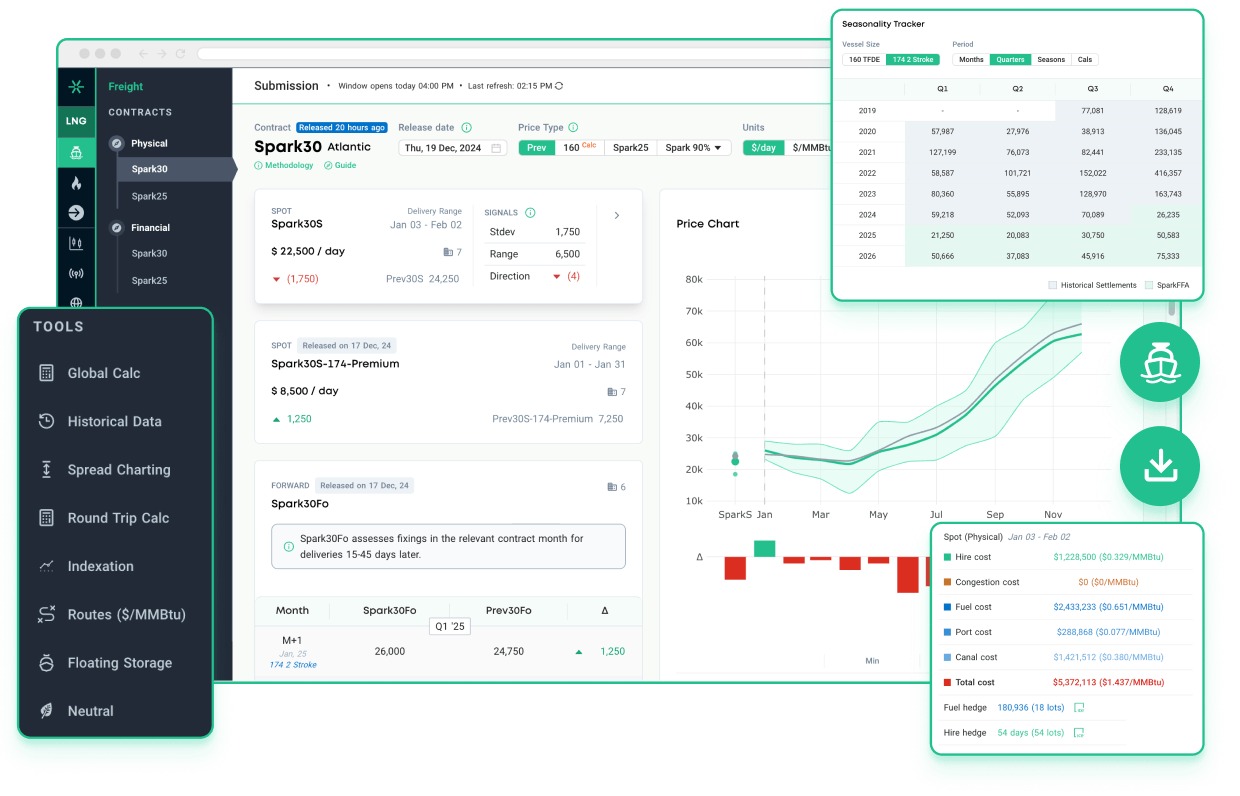
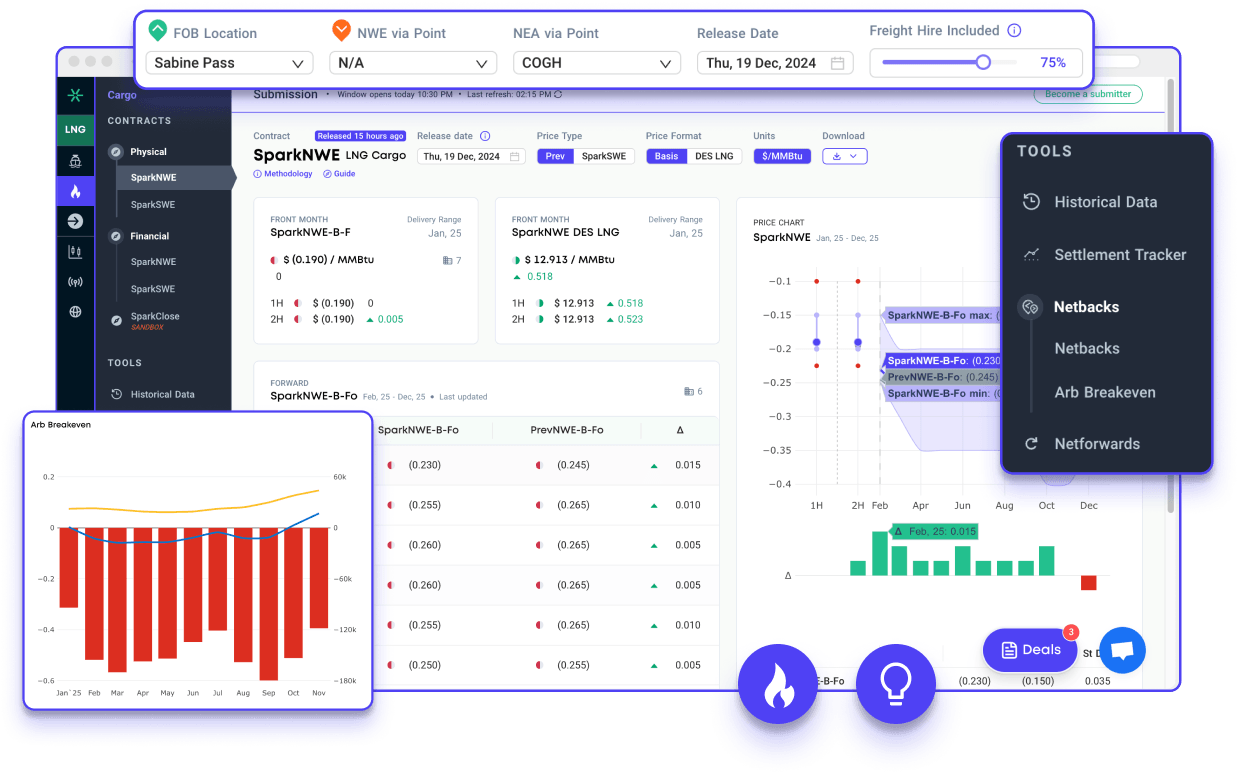
LNG Cargo
European delivered spot and forward LNG prices (SparkNWE/SparkSWE) that are critical for understanding the economics of alternative gas supplies.
LNG Access
Unparalleled breakdown of European LNG terminal costs providing more transparency and efficiency to the European regasification market.
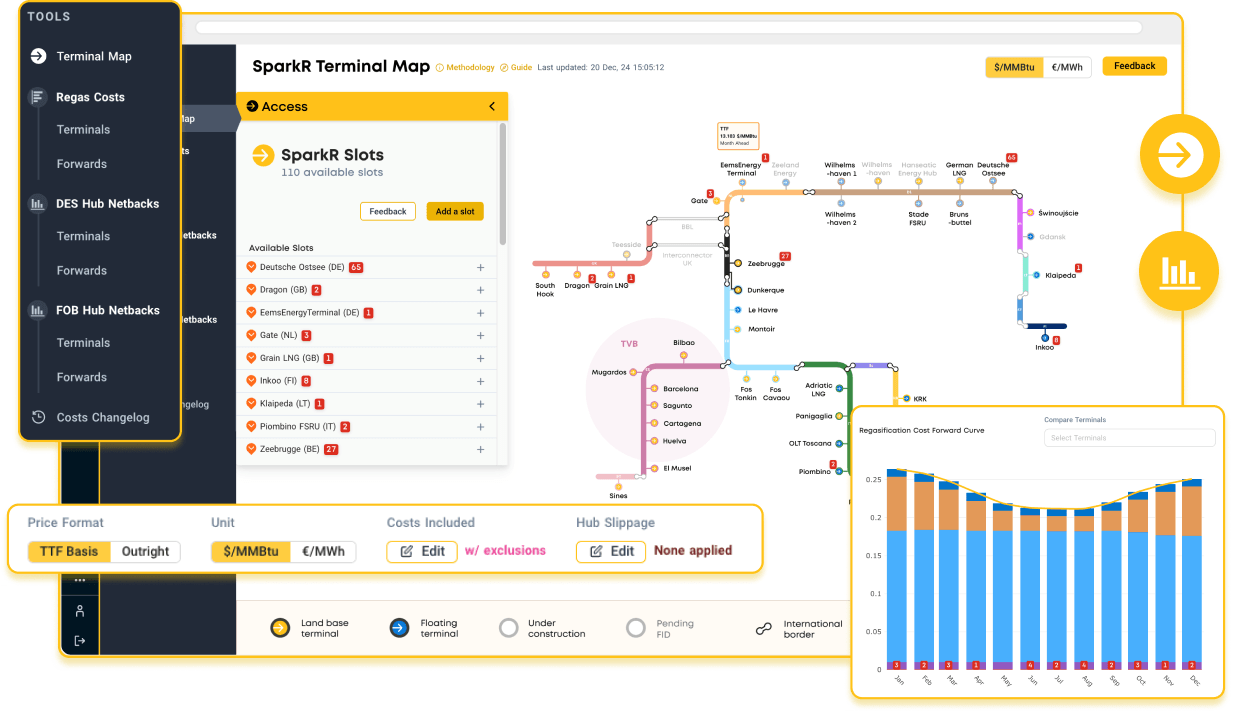
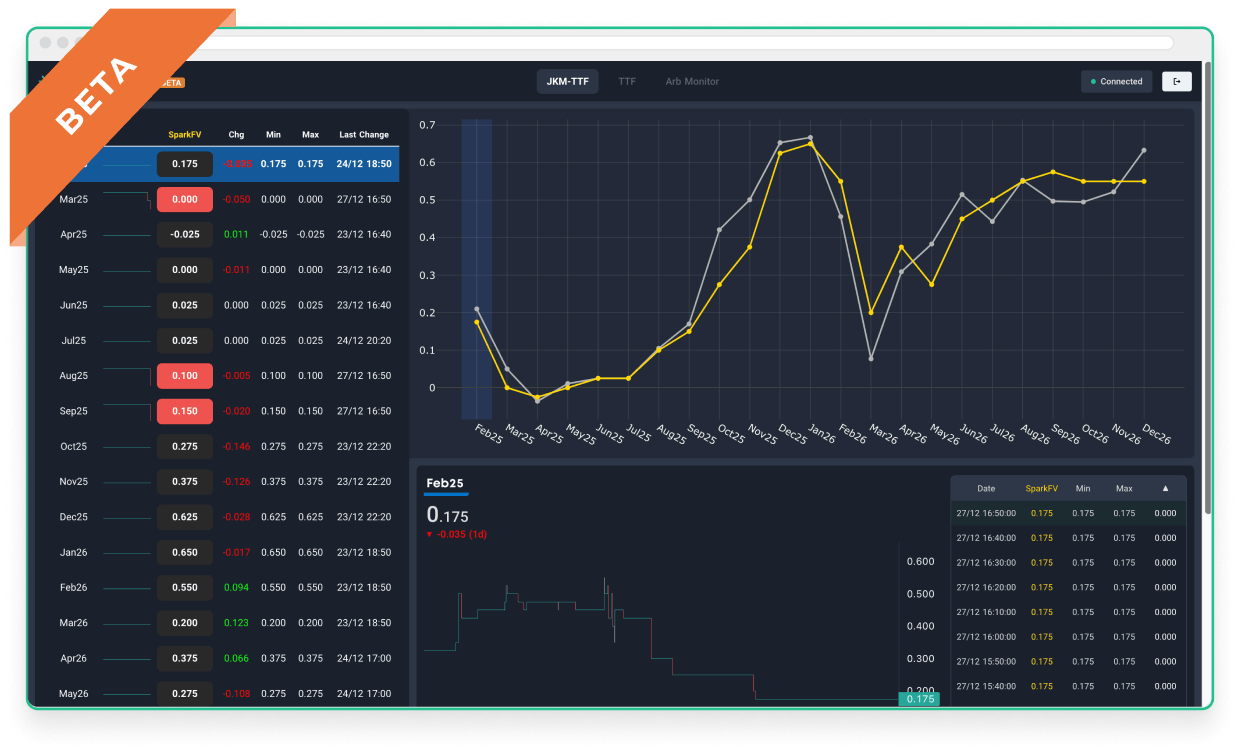
Intraday
BETA Track the fair value JKM-TFU M+24 curve in real-time with Spark Intraday Beta , updated every 10 minutes using aggregated broker feeds. This live JKM-TFU feed integrates directly into our LNG netbacks and arb calculators, delivering real-time insights into where global LNG arbs and breakevens are pricing across the forward curve. Beta available now. Deeper arb integration coming H1 2025.
Hubs
9 out of 10 cargoes loading out of the USGC could be optimised by at least 24 hours. Less than 1 in 10 is.
ubs is designed to streamline slots swap operations in the US Gulf Coast by allowing you to post, find, and match loading slots swaps with other Offtakers. No transaction fees.
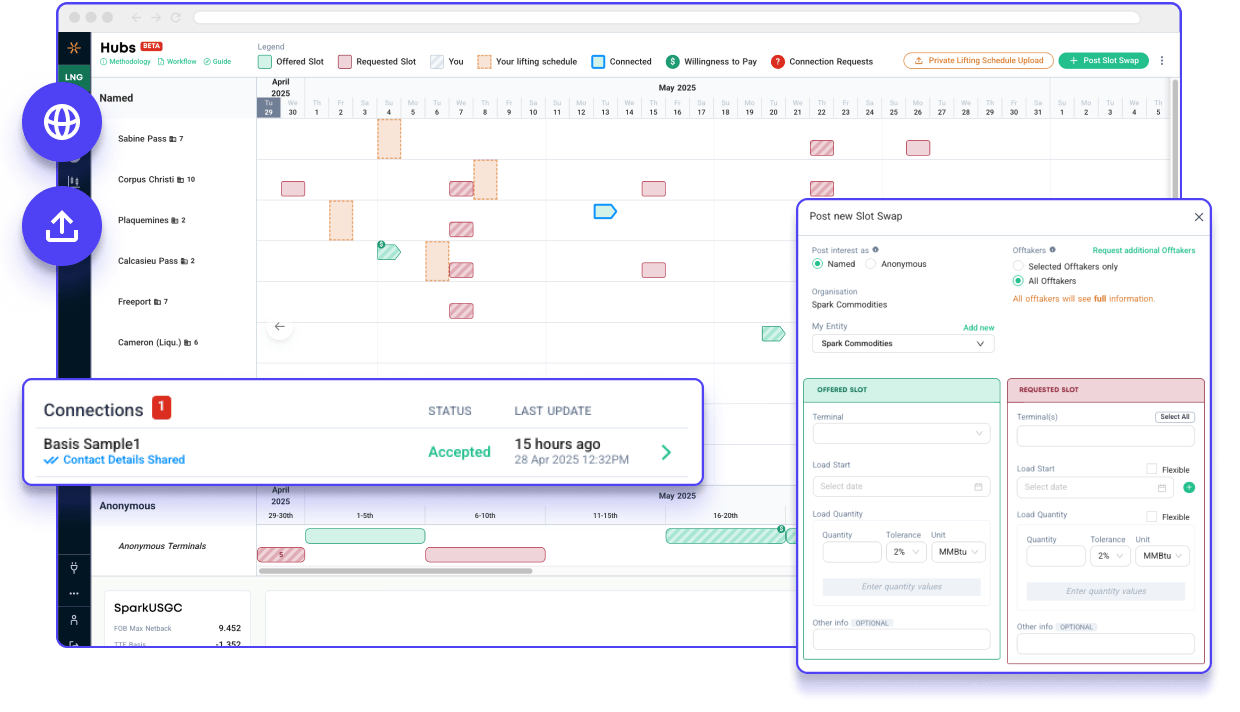
European Gas
SparkLEBA
Non-journalistic, algorithmic, repeatable and transparent THE and TTF indexes and forward curves with a 17:00 release time.
Fully auditable, transparent and mechanical price formation made up of a daily average of over 50,000 bids, offers and trades from leading LEBA brokers. Low cost and unbundled pricing structure.
Fully auditable, transparent and mechanical price formation made up of a daily average of over 50,000 bids, offers and trades from leading LEBA brokers. Low cost and unbundled pricing structure.
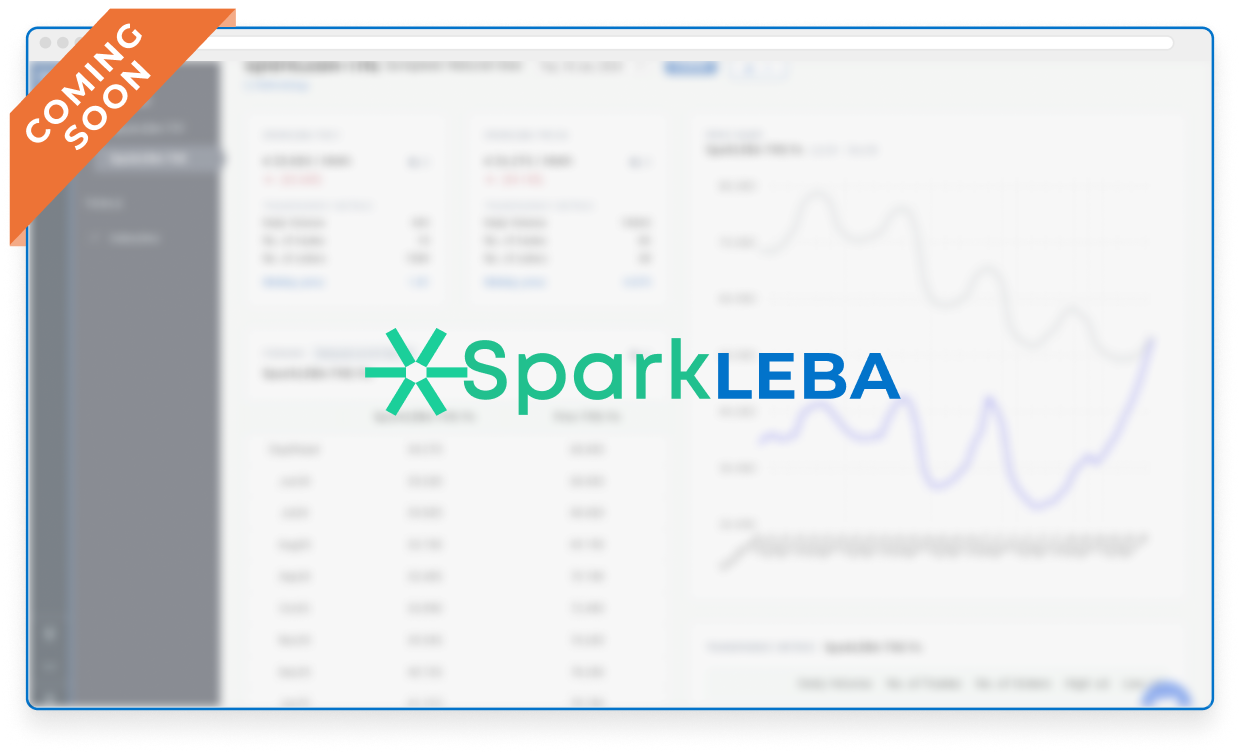

Built for the future.
•
Designed using the latest technology so we can evolve as the markets do
•
Customer led development to ensure we constantly provide what the market needs
•
Strong shareholder backing to underpinning long term potential
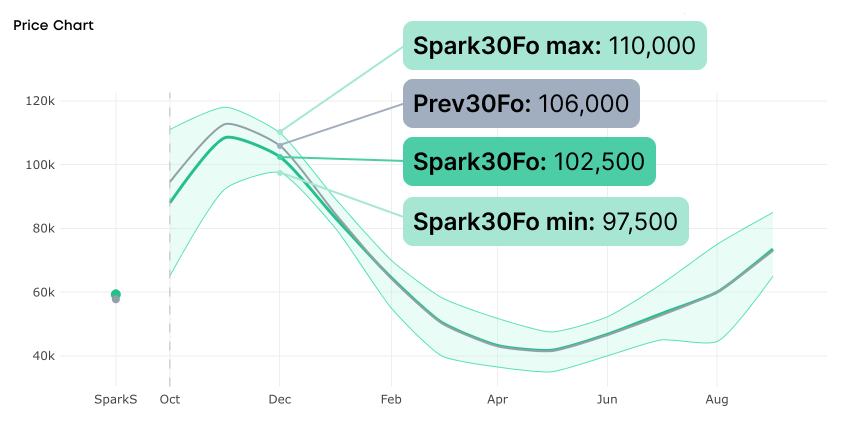
Transparent methodologies strengthened by robust systems.
•
IOSCO compliant systems and methodologies audited by market leading firms
•
Transparent price formation to give greater insight to customers and increase trust in the market
•
Fully auditable data trail and strict permission controls

Data integrations that drive automation
Connect to Spark data in the way that works best for you
Have questions about Spark's API?
Contact our team at data@sparkcommodities.com

Who we are
Spark Commodities is a leading provider of pricing data for the global commodities market. Focused on improving transparency and efficiency in Gas and LNG sectors, Spark delivers high-quality pricing assessments and analytics.
Through technology and a user-centric approach, Spark Commodities supports industry stakeholders in making informed decisions. Its platform combines innovative analytics, market participant formulated pricing data, and intuitive tools to enable traders, shippers, and energy companies to navigate dynamic markets with confidence. By fostering transparency and driving digital transformation, Spark is revolutionizing the way LNG and Gas markets operate.
Today, we proudly serve over 200 companies globally, providing insights and solutions across European gas and LNG markets. With teams based in London, Singapore, and Paris, we bring a global perspective to solving critical challenges in commodity pricing.
Spark launched in early 2019 with the backing of Kpler Ventures, part of Kpler, the world’s leading provider of shipping tracking and commodity data intelligence, and EEX (formerly Powernext), part of Deutsche Boerse Group, a globally recognized exchange. In November 2021, The Intercontinental Exchange (ICE), the market leader in gas and LNG markets, joined as a shareholder, strengthening our commitment to driving change and progress in the markets we cover.

